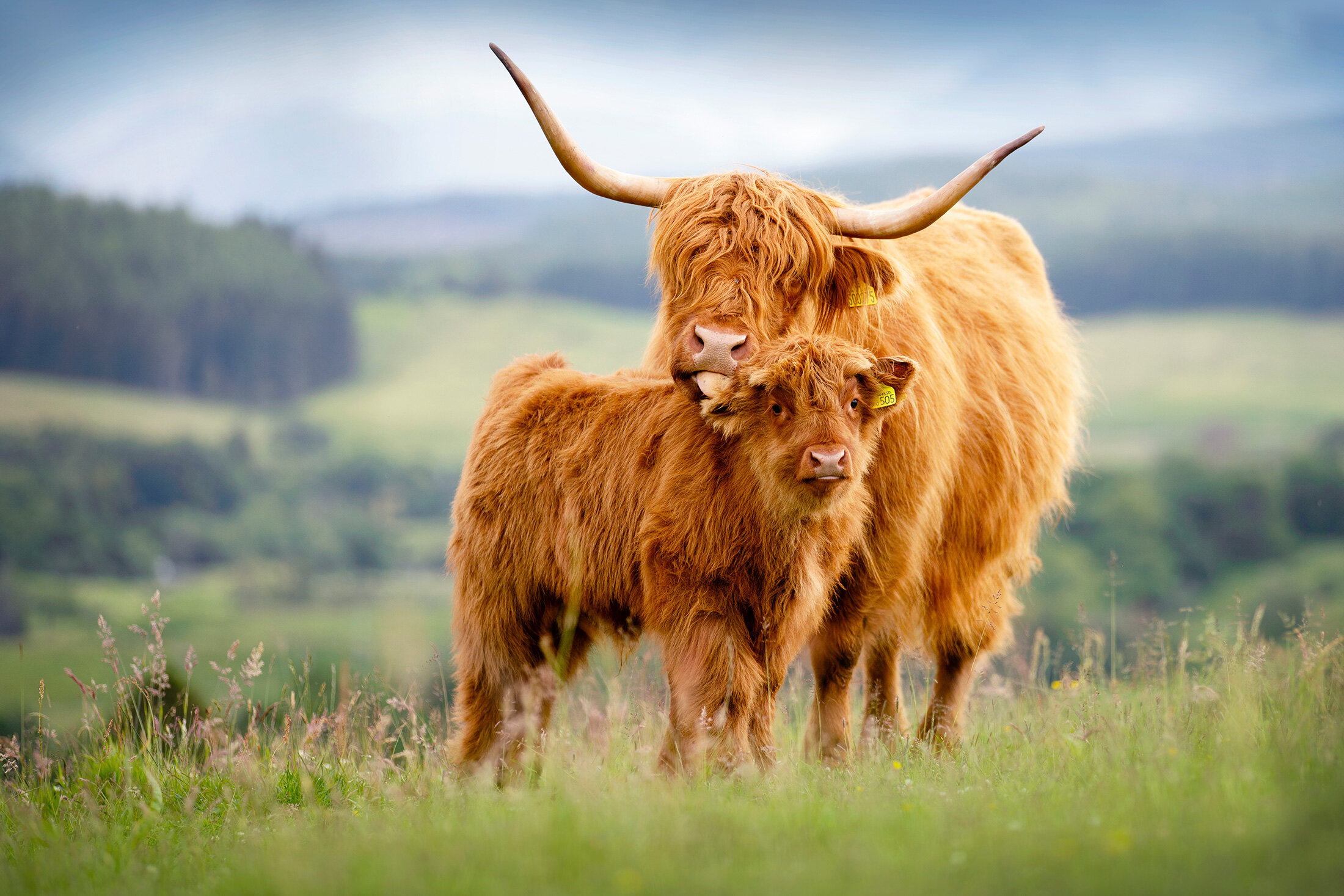
These are the Kyloe, which is small and black, and the mainland, which are larger and red. A herd book was established in 1885, including two different Highland cattle types. These were brought to Britain from Africa and other parts of Europe by Neolithic farmers. It is believed that the Highland cattle descended from the Ankole-Watusi known as Hamitic Longhorn, which originated in the Scottish Highlands and the Outer Hebrides islands. Grass, hay, straw, silage, and even cerealsĮxtremely adaptable can survive in cold or rainy weather but also shed its coat to live in hot areas as well. Varied Colors include black, brindle, dun, ginger, grey, red, silver, tan, white, and yellow.

They are socialized and have the ability to freely. Our Highlands are supplied with premium hay and a fresh abundance of clean water throughout each day. We take pride in raising our cattle with compassion. They have a double coat of hair – a soft undercoat and an overcoat consisting of long oily hair. Lil Valley Ranch provides you with high-quality Highland Cattle and an exceptional buying experience. Kyloe, Long-haired Highland Cattle, Long-haired Scottish Cattle, North Highland Cattle, Scottish Cattle, Scottish Highland Cattle, West Highland Cattle These cattle are known for their sturdiness and are raised primarily for beef production. These are another colouring where more work needs to be done & I would be happy to discuss these with anyone further.The Highland cattle are a Scottish breed known for their long horns and shaggy coat. Yellow brindles appear to occur occasionally though. They also postulated another gene that may darken coat colour slightly.īrindle patterns in dilute red animals (yellows and whites) are exceedingly rare and so it appears that the dilution gene may mask these. When researching the gene that dilutes Charolais (D C) to white the authors found a gene at the end of chromosome 28 that appeared to soften any colour even further (makes a red animal light red, nearly yellow for example) and this may well be present in Highlands and could explain some of those 'in between cattle'. This may be possible in Highlands and I would be interested to hear about any of these calves as well. A white animal from a red or black parent suggests that there may be some other gene related to white as has been shown in other species. On a small number tested, the Bus Dubh pattern (black muzzle ring) appears to only show up on e/e animals, although the location of the Bus Dubh gene has not been uncovered.Īt the moment, all white animals have been D H/ D H on DNA tests performed, and so must have received a dilution gene from each parent (that is neither parent could be red or black). We will then add you to the waiting list for the calf of your dreams. The 'wild type' (E +) gene is required to show up the brindle colouring when the brindle gene (A br) is present on the A locus. We are always here to answer any questions. In some 'wild type' animals (only bulls that we are aware of), there will be some quite obvious black hairs stippled around the face and down the neck and legs. Red animals can be red (e/e) or 'wild type' (E +/E +, or E +/e) but they all look the same.
HIGHLAND CATTLE CALVES VERIFICATION
I have only had the opportunity to follow one of these up thus far, and sadly discovered that the suggested sire was not the sire (on DNA parentage verification tests) – someone jumped the fence!


If anyone has any of these such black calves born, I would love to follow them up.

There appears to be a higher prevalence of black offspring from brindle parents. The only way this could happen is if there was another gene for black somewhere that was recessive – and this may be possible but hasn't been detected in DNA tests so far.
HIGHLAND CATTLE CALVES PLUS
Plus with two little Jersey calves too, theres many cute baby calves to see. Therefore a black (or dun or silver dun) animal can not come from two red parents (or yellow or white). The kids farm has never had two Highland cows born so close together before. For a calf to be black (or dun or silver dun), one of it's parents must have given it the black E D gene, and so must have been black (or dun or silver dun) themselves. This means that for an animal to be black, it must have one (or possibly two) of these E D genes. Black (E D) is dominant as in black Angus. This has been known about for some years and accounts for the 2 basic colours – red and black.


 0 kommentar(er)
0 kommentar(er)
